NIL
Nikki Spetseris previews ‘Full Court Press’ season two
Last year’s Full Court Press women’s NCAA basketball docuseries proved to be a remarkable moment. The series, from Omaha Productions, Words + Pictures, and ESPN, followed Caitlin Clark, Kamilla Cardoso, and Kiki Rice through a wild season that saw massive interest in them, especially around Clark breaking the NCAA scoring record. So how do you […]
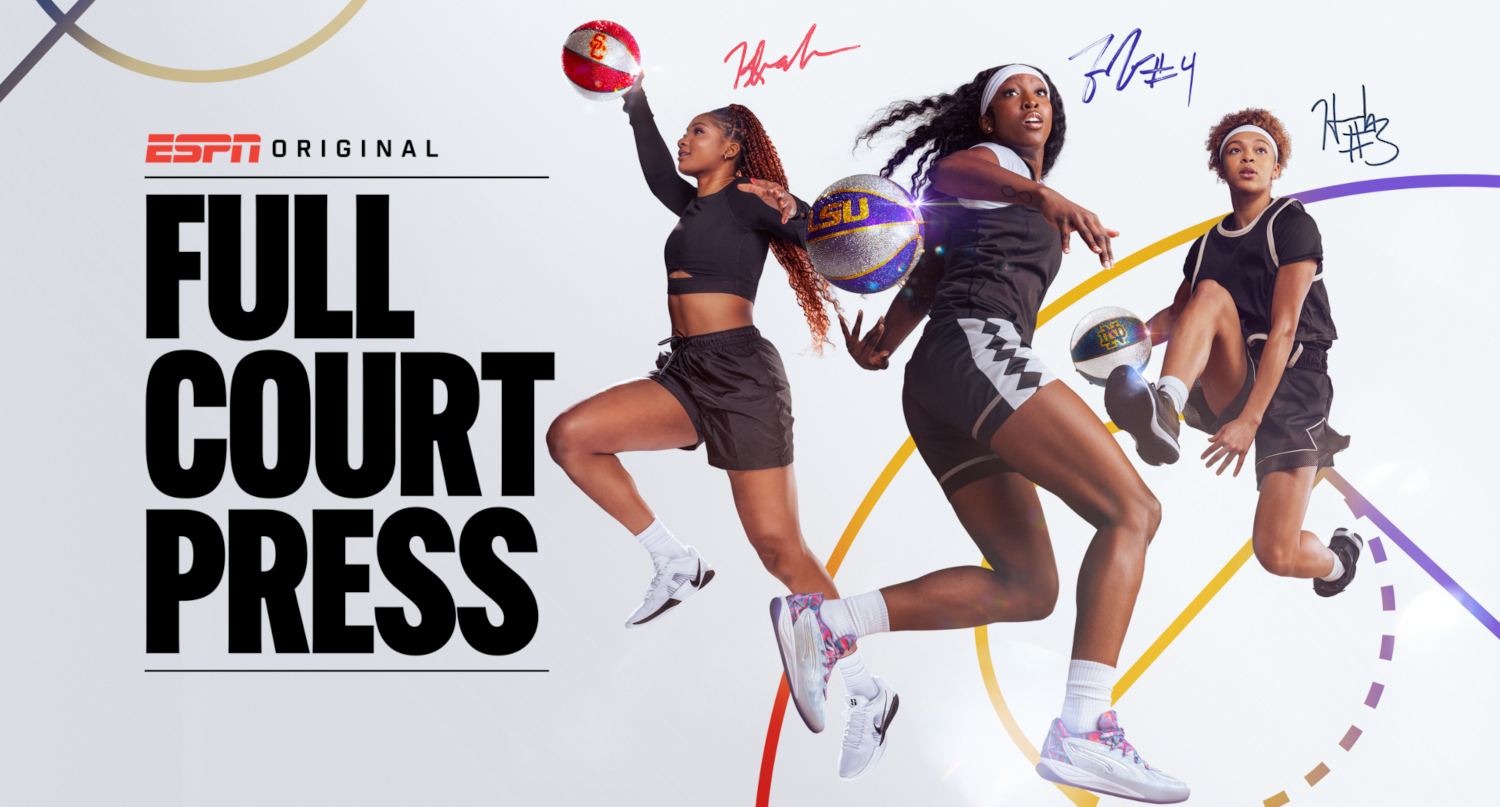
Last year’s Full Court Press women’s NCAA basketball docuseries proved to be a remarkable moment. The series, from Omaha Productions, Words + Pictures, and ESPN, followed Caitlin Clark, Kamilla Cardoso, and Kiki Rice through a wild season that saw massive interest in them, especially around Clark breaking the NCAA scoring record.
So how do you follow that up?
That was a key question around the second season of Full Court Press, which was green-lit last May. The first season drew a lot of attention, but there was discussion of how much of that was the Clark effect. And that fit into wider discussions about where women’s college basketball ratings would go post-Clark. Indeed, season one director Kristen Lappas even told Awful Announcing last spring “We caught lightning in a bottle” in terms of how well things broke for the first season of the show.
But the post-Clark era has seen ratings interest in women’s college basketball continue, with even some year-over-year growth. And that’s promising for the second season of Full Court Press, which premieres Saturday. Its first two episodes will air at 1 p.m. and 2 p.m. ET on ESPN, with the final two airing May 11 at 9 p.m. and 10 p.m. ET on ESPN2, and with all episodes available on ESPN+ following their airing.
Nikki Spetseris, who directed the second season of Full Court Press, spoke to AA on that this week. She said there were some questions on how to follow up the first season, but this one (covering Notre Dame sophomore guard Hannah Hidalgo, LSU junior guard Flau’jae Johnson and USC graduate student forward Kiki Iriafen) came together to provide its own unique set of stories.
“I think last season was amazing, but obviously they had a superstar, and a tangible thing to follow, which was her record-breaking season,” Spetseris said. “No one knew what to expect this season: will we live up to the hype of of the first one? And I think it’s almost more exciting, because we have…I don’t want to say they didn’t have three big personalities, but I do think that every woman got the same airtime [in S2], and we got to put a spotlight on three different personalities, programs, backgrounds, equally, and follow those stories.”
Telling three unique athletes’ stories
Each of those athletes has quite a different story. Spetseris said Johnson’s is a combination of her playing success, her business success, and her personal background.
“Flau’jae Johnson, the first time I met her in person, she just walked into the room, and there was this air about her. You’re like ‘She is a superstar.’ She just has that energy and that feeling around her. Not only are these three women amazing athletes, and we were able to see that, the discipline and the work they put in every day, but I think with Flau’jae, it’s the story off the court.
“I think her backstory is so inspiring, growing up with a single mom and her dad passed away while her mom was still pregnant with her. And she’s then pursuing his kind of rap career. I think she stands out with her off-the-court story. Also, she has more NIL deals than almost any college basketball player. So that was kind of interesting to follow, just a business mogul, musician, and athlete.”
With Hidalgo, Spetseris said the docuseries shows off a side of her that fans might not expect.
“Hannah Hidalgo, I think people see her on the court and she’s so fiery. Those were some of the the games I looked forward to the most, watching her out there flexing, doing her Incredible Hulk and just getting her team and the crowd amped up.
“I think what was cool to figure out with her, which we talked about in the series, is that off the court, she’s not like that at all. She’s really mellow. She’s really calm. She’s kind of quiet. So I think that makes her very interesting. There’s something that’s stepping out onto the floor and being under the lights and being around the crowd that just flips the switch for her.”
And with Iriafen, Spetseris said the show got a chance to watch her grace under pressure during difficult times.
“Kiki was kind of the player that maybe myself and my whole team knew the least about going into the show, and she just continued to impress us. I think of just grace when I think of her. She’s really poised. They really all were vulnerable and let their personality show, but I think there were some moments with Kiki where there were some growing pains at the beginning of the season, airing out chemistry with her new team and what her role was.”
One moment in particular with Iriafen stood out for Spetseris.
“We had a really interesting moment with her after the Notre Dame-USC game. She had a really tough time, and she opened up to us and she gave a teary interview about the turning point that that game created for her. That took a lot of guts.
“And at first she didn’t want to talk about it. But we kind of stressed the importance of showing the highs and lows; ‘You’re a gorgeous, talented athlete, let young women know that you have struggles too.’ With her, I was just really impressed how she opens up. And she has this grace that maybe we didn’t know at first, that she was so poised that way.”
Another element with Iriafen was her academic work in grad school and how she balanced that with on-court play.
“With Kiki, that was just a little bit more of her story,” Spetseris said. “I mean, graduating Stanford in three years is insane. So certainly that just became a little bit more of her story arc than the other two women.”
Maintaining women’s college basketball’s momentum
Overall, Spetseris said she sees this season of Full Court Press as proof there are still incredible stories to cover in women’s college basketball even after Clark.
“The time and place we’re at, wondering if this was just a moment in time with women’s basketball, I think we were able to help prove that it isn’t, and keep that momentum going.”
Speaking of maintaining momentum, Spetseris said coming into an established series like this actually had some benefits, with her able to build on the work Lappas had done.
“I think as filmmakers, we always want to put our stamp on things. But for me, I just remember when I first got the call and first started talking about the show. I just kept saying like ‘You know, we don’t need to reinvent the wheel.’
“They’d already set so many things in motion that were successful, even kind of like a rough formula for ‘Here’s what we track over the season, and here’s our graphics look.’ And we had a composer. There were so many things that I usually have to worry about that were just already set up that I could really focus on getting to know these women, and their stories, and how do we tell the best stories? So I actually felt really lucky that I could just focus on the fun stuff, if you will: Kristen had already put a lot in motion. So that was great.”
Spetseris and her team did make some changes here and there, though. That included more emphasis on practices and on some different interview settings.
“They didn’t do so many practices last season, and I tend to just love that process of seeing what you work on in practice and then seeing it play out in a game. So I think that was kind of an interesting little added thing.
“And Kristen had these epic interviews that were so gorgeous, where these women were the center of the room, and we loved that. But I feel like just to get to know them, we kind of started, like with this vulnerable interview I was talking about with Kiki, that was just in her bedroom on her bed in the afternoon. And we tried to craft a few intimate moments like that, where maybe they would open up in a different way.”
She said the series’ focus on telling the stories of each athlete on and off the court remains, though.
“You’re always trying to get that right combination as a filmmaker: what will get the best result, what will make people the most comfortable? So we played around with that a little bit, and that served us well. But generally the storytelling, I just feel like it’s really ‘What’s the flow of the story and how do you mix these three characters together?’
“And for me, the mark of success is always, I mean, we hope people watch, but ‘Do you care about these characters and care about these women after you watch the show, and do you want to tune in and and hear more? Do you want to follow their games? Are are they relatable in some way?’ I think Kristen did a great job at that, and I think that I’ve done and my team has done a great job with that this season.”
The logistical hurdles of a multi-athlete series
It’s a lot of work to pull off a docuseries covering three athletes across three different schools over the course of six months, though. Spetseris said her team was critical to making that happen.
“For this project, we’ve been following these women for about six months, obviously their season story arc, but also injuries and birthdays and family events. And you really are embedded. I just want to shout out the women for letting us in and being so vulnerable. But also, I had like a forty-person team, the people in the field and the cameras and editors and assistant editors, and then the three field producers.
“I’m not everywhere, I’m also running four edit rooms while we’re filming, so we have three field producers that were just out there, and they’re the ones that really become like family to the women. Shout out to them and the rest of the crew, because it really is a team effort on this one.”
She said another particular challenge with a project like Full Court Press is that these athletes are all busy, and have frequent short-notice schedule changes.
“The logistics of it are the most difficult part. And I also think that because they’re young women, they have a lot of scheduling changes. We would fly somewhere and we’d have a day planned and then all of a sudden a practice would get scheduled, or a time would change for a practice or a workout or training session, or maybe a NIL commercial shoot would pop up.”
Spetseris said the key from her perspective is being flexible there.
“I think that you just have to be, most people that produce and direct are really type A, and I think you have to let a little of that go when you’re doing documentary work, particularly with college athletes. I got a lot of mid-day or late-night phone calls about, ‘Hey, this isn’t happening anymore, what should we do now,’ and just brainstorming on the fly.”
And that flexibility led to some benefits for the series, including an unexpected chance to connect with Johnson at a key moment.
“After LSU’s Elite Eight loss, we ended up just by chance being on the same flight as Flau’jae going to Atlanta,” Spetseris said. “We saw her at the airport. We just thought, ‘Oh my God, we need to get a shot of her on the plane.’ We filmed her right after the loss. So we have her at the airport, in an airplane.
“And then it was kind of this discussion, basically like midnight that night, ‘Do we just stay in Atlanta and film with her the next day? Because how crazy is that access?’
“There’s a lot of that last-minute decision making in the show. And the games are at night and on the weekends, all the stuff. So we did definitely live and breathe it the last six months, which was really fun. But also, we all need naps now.”
While projects like this do take a massive amount of work, Spetseris is optimistic Full Court Press can pave the way for more docuseries on female athletes.
“I’ve been doing this almost 20 years, and this is one of the first shows I’ve done with female lead athletes. And the majority of my team behind the scenes, shoutout to the guys that were on our team too, but we had a a strong female-led team. And just knowing my own personal energy for it and my team, for us, we feel like, ‘Oh my God, this is such a long time coming. This is just the beginning.’
“Now it’s such a rare thing, there’s still not enough of these docs out there. But I think hopefully really soon they’ll just be good docs and great athletes and all that stuff that they are. I think now it’s so new still that there’s such a focus on these being female-led stories, right? So for me, no, I never worry, because I know how me and all my friends think, and they’re like ‘More of this.’”
NIL
Cowboy Baseball Falls To Duke
ATHENS, Ga. – Oklahoma State dropped a 12-5 contest to Duke in its opener at the NCAA Athens Regional Friday night at Foley Field. With the loss, the third-seeded Cowboys fell to 28-24, while No. 2 seed Duke is now 38-19. OSU will face fourth-seeded Binghamton in an elimination game Saturday at 11 a.m. (CDT). […]

With the loss, the third-seeded Cowboys fell to 28-24, while No. 2 seed Duke is now 38-19. OSU will face fourth-seeded Binghamton in an elimination game Saturday at 11 a.m. (CDT).
The Cowboys smacked four home runs in the loss, with Kollin Ritchie, Garrett Shull, Ian Daugherty and Brock Thompson all going deep, but left nine runners on base in the game.
Mario Pesca took the loss on the mound to fall to 7-3 on the season. The right-hander worked three innings, allowing nine runs on nine hits with two walks and a pair of strikeouts.
Brennan Phillips was strong out of the bullpen, finishing the final five innings on the mound and racking up a career-high eight strikeouts while allowing three runs.
Duke jumped out to a 3-0 lead in the second inning. Following a single and a hit by pitch, a double by Sam Harris brought both runners home. Later in the frame, a two-out single plated the Blue Devils’ third run.
The Blue Devils rallied for six runs in the third to extend their lead. Ben Miller got things started with a solo home run to lead off the inning, and Duke tallied five more hits, including a pair of two-run homers, to take a 9-0 advantage.
OSU got on the scoreboard in the fifth as Ritchie delivered his 11th homer of the season, a no-doubter to right field, and added its second run in the sixth when Shull went deep for the third time this year.
The Cowboys plated three runs in the eighth, cutting their deficit to 12-5, as Daugherty delivered a solo homer and Thompson smacked a two-run blast over the wall in right field.
NIL
Saint Francis community reflects on transition to Division III from Division I
On March 25, Saint Francis announced it was transitioning its athletics program from Division I to Division III. The decision jarred the campus and surrounding community. Over the past few weeks, the Mirror’s Neil Rudel reached out to a number of past Saint Francis administrators, coaches and players, inviting their reaction, and more than a […]



On March 25, Saint Francis announced it was transitioning its athletics program from Division I to Division III.
The decision jarred the campus and surrounding community.
Over the past few weeks, the Mirror’s Neil Rudel reached out to a number of past Saint Francis administrators, coaches and players, inviting their reaction, and more than a dozen submitted their thoughts.
Following is a compilation:
Hoping Saint Francis
spirit will live on
With the landscape of college athletics changing so rapidly, it’s unfortunate that Saint Francis felt it needed to make the transition away from Division I athletics.
The Red Flash have always been a light to its alumni and fans as a small school that quite often accomplished things much bigger than those outside the SFU community imagined it could.
With the players I had the privilege to coach from 2007-2012, we dreamed about going to the Big Dance.
We worked hard to be a model program for the entire school and local community.
When we did make it there in two of those years, it provided an opportunity for not just our team, but for the entire campus and local community to celebrate because, quite honestly, we felt we were all one team.
Everyone played a part in helping us be successful, and I am very thankful for the support. Our team had a saying that was carried down from previous teams … “We’re Flash, We’re One.”
My hope is this spirit will continue to be lived out at SFU. The transition will be challenging because it stirs many emotions from current student-athletes, alumni and fans of an institution that means so much.
I am rooting for them as I still have many great Red Flash family relationships and hope that they do become a dominant athletics program in their new landscape.
Susan Robinson Fruchtl
Boalsburg
(Susan Robinson Fruchtl served as Saint Francis women’s basketball coach from 2007-2012 and then as its athletic director from 2016-2020).
‘Proud and honored’
to be part of tradition
Most of the guys from the 1991 team — Coach Baron included — are still in touch through a group chat. We were all stunned when the news broke about SFU moving to Division III.
My time as a student-athlete at SFU was incredibly meaningful. Being part of the basketball program opened doors for me to travel and experience the world after graduation. I’ve always felt a strong connection to the program. SFU is a special place.
I still laugh when I think about how many guys we played against would complain about making the trek up the mountain to face us. It’s tough to see things change like this, but the memories made in Loretto will last a lifetime.
Big shoutout to all the athletes — across all sports — who helped build SFU into a competitive and respected program.
I’m proud and honored to have been part of such a rich tradition.
Joe Anderson
Uniontown, Ohio
(Joe Anderson played for the Flash from 1988-91. He is SFU’s all-time leading scorer in men’s basketball with 2,301 points, having broken the record set by Maurice Stokes.)
NIL, transfer portal
accelerated decision
My initial reaction to the decision made by the university was surprise and sadness. I sympathized with the current athletes and coaches and the difficult decisions they were forced to make so abruptly.
So many of my great personal memories involved Saint Francis athletics, and that association led to a 47-year career coaching at the NCAA Division I level at four different institutions.
My daughter, who was a Division I coach at Holy Cross, offers a perspective all small colleges are facing. She recently left coaching after a successful career as a head coach at two Division I institutions.
The impact of NIL money and the transfer portal on recruiting and team continuity clearly played a part in her decision.
Unfortunately for Saint Francis, the combination of finances, timing and location in regard to the NCAA’s dramatic changes and conference affiliation are at the heart of it.
I have to believe the leadership at the university factored in all relevant data available before the final decision was made.
As a proud alum, my sincere hope is the university finds success moving forward.
Dave Magarity
Fenwick Island, Delaware
(Dave Magarity was the head men’s basketball coach at Saint Francis from 1978-83 and Marist from 1986-2004. He concluded his career as the head women’s coach at Army from 2006-2021).
Secrecy prevailed
as plan was in works
When I opened the email from The Office of the President on March 25, I never anticipated the devastating news it contained for the Saint Francis University family.
I always viewed Saint Francis as the place where miracles happened and faith overcame challenges.
On March 25, it became the place where secrecy prevailed over honesty and truth. Certain individuals in leadership positions failed the people they were called to serve, the members of the Saint Francis community, especially the student-athletes, coaches, faculty and alumni.
More than 600 students, coaches and staff came to Saint Francis believing they would have a Division I experience.
They were misled as this plan to transition SFU athletics to DIII had obviously been in the planning for several years.
This action by the president and trustees certainly does not follow the Franciscan values that are at the heart of the university and the student-athlete experience.
The student-athletes and coaches have embraced these values for years and have represented the university throughout the community and beyond.
There are individuals who feel the current state of the NCAA makes things impossible for SFU. However, the athletic world has been in a state of chaos, within the NCAA, for years.
There are 364 Division I institutions (and the number is growing) striving to meet the challenges in different ways that coincide with their conferences and institutions.
SFU has always met the challenges and provided a vibrant program for the students and university community.
SFU needs Division I athletics, and Division I athletics needs SFU.
The president and the trustees should re-examine and engage in an open review, involving diverse representation from within the Red Flash family.
Alumni, students (past and present) faculty, coaches and staff deserve this from their Division I institution among the pines.
Bob Krimmel
Hollidaysburg
(Bob Krimmel served as SFU’s athletic director from 2005-2017 after a 30-year career as a coach and administrator at Penn State.)
Thankful for fond
memories in Loretto
I have to say the news came as a surprise and is a great example of how quickly things can change.
The excitement and exposure of the NCAA play-in game followed by the dropping of Division I athletics illustrates the extremes in college athletics today.
I understand. It is hard to compete today, but the majority of people understand that.
I am not familiar enough with the long-term burden today’s athletic commitment placed on the institution’s future to judge it.
I can only say I am thankful for the memories growing up watching the program and then being a small part of it.
Those memories and special moments are what set Saint Francis apart from all the others. Change is always hard, but growth can lead to new experiences and opportunities.
I’m hoping the future creates that “One Shining Moment” that might be hard to see right now.
Jeff Bower
Auburn Hills, Michigan
(Jeff Bower is a Hollidaysburg native, former Saint Francis and Penn State assistant coach and Marist head coach. He is a past head coach of NBA teams in New Orleans and Charlotte as well as the general manager in Detroit and Phoenix. He is currently a scout for the Brooklyn Nets.)
Feeling empathy for those
tasked with the decision
The announcement that our athletics program will transition to Division III was a gut punch to almost all those connected to Saint Francis sports, past and present.
Most of us were still riding the high of our men’s basketball team’s Northeast Conference title and March Madness appearance when we received the news.
Only time will tell if this move makes financial sense for the institution.
Our Board of Trustees believes that it will. I empathize with the members of our board — no one wants to be the bearer of bad news. Especially when it’s telling a group of good people that they will be losing something they deeply cherish.
I empathize with our coaches, alumni, boosters and fans. There is a something magical about SFU that binds people together. That’s why we celebrated Norm Van Lier’s legacy last season and Kevin Porter’s career back in February.
That’s why people still talk about Mack the Cop, Art Martynuska and Father Vince and make it a priority to seek out Maureen Malloy when they return for a game.
I empathize with our current student-athletes. Most of them dreamed of competing at the DI level and worked hard to make this dream a reality. Much of their identity is tied to their athletic talent.
Through no fault of their own, they are forced to choose between staying at SFU and eventually competing at the DIII level, or transferring to another school to continue competing at the highest level.
Saint Francis is a special place. That is not going to change when we move to DIII. But that doesn’t take away the pain of losing something you cherish.
Pat Farabaugh
Loretto
(Pat Farabaugh is a professor of communications at Saint Francis and the Red Flash men’s basketball and football team’s play-by-play announcer.)
Impact on women’s
program significant
As a former women’s basketball player and coach, I’m deeply disappointed by Saint Francis University’s decision to move from Division I to Division III — especially so soon after the men’s team’s incredible NCAA tournament appearance.
That moment reminded us all of the magic small programs can create. Unfortunately, this may be the new reality for many smaller Division I schools.
The current NCAA landscape — with the transfer portal and NIL deals — has made it increasingly difficult for schools like Saint Francis to compete.
This decision affects all sports, but what’s especially heartbreaking for me is the impact on our women’s basketball program, which has a long-standing tradition of competing in the NEC Conference and NCAA tournaments.
Coach Jenny Przekwas laid the foundation, Myndi Hill continued the greatness and Susan Robinson Fruchtl and Joe Haigh carried it forward with pride and passion.
As someone who has worn the jersey and stood on the sidelines, this decision hurts. But I’ll always support Saint Francis and hope this change brings stability — even if it’s bittersweet.
Deanna Jubeck
Hollidaysburg
(Deanna Jubeck played at Saint Francis from 1997-2001 and coached there from 2001-04. She’s currently the head girls coach at Hollidaysburg.)
Sadly, prediction came true on SFU future
Over a decade ago, I had the honor of serving on the Saint Francis President’s Athletics Advisory Committee alongside experienced, passionate coaches and administrators.
At each meeting, Father Gabe Zeis would begin with a prayer, reminding us to consider the university’s greater good.
After one session, I asked him what kept him awake at night. Without hesitation, he said, and I paraphrase, “Within 10 years, several private colleges in our region will no longer exist. The demographics just don’t work. I’ll do everything in my power to ensure Saint Francis survives and thrives.”
Sadly, his prediction has largely come true.
Since arriving on campus in 1972, I’ve been deeply involved in the business of college athletics. It’s a passionate, high-stakes world, often led by emotion rather than strategy. I believe SFU’s Board of Trustees made its recent decision with great care, prayer and consideration — not just for athletics, but for the university’s overall future.
No president wants a decision like this on their legacy, but sometimes leadership means doing what’s best for all.
For years, I heard, “How does Saint Francis do it?”
My response was always: Strong leadership, dedicated coaches, committed faculty and a special sense of community.
But the challenges — financial, demographic, and now, structural changes like the transfer portal and NIL — have made Division I sustainability nearly impossible.
In my opinion, while certainly difficult, the move to Division III was inevitable. SFU remains a strong option for student-athletes, with excellent academics, facilities, and a welcoming campus.
My wife Cheryl (SFU ’79) and I still visit often, and I serve on the Athletics Hall of Fame Committee. With luck, we’ll be back for my 50th reunion in 2026. Though things change, the memories — and the Red Flash spirit — remain.
SFU Athletics will be just fine. It’s about the memories you make.
Ron Bertovich
Buffalo, N.Y.
(Ron Bertovich was the sports information director at Saint Francis and Iona before becoming commissioner of the Atlantic 10 Conference from 1986-94 and the deputy commissioner of the Colonial Athletic Conference from 2005-17 and later an executive vice president for the Buffalo Sabres).
Money, changing times
made move inevitable
As a graduate of Saint Francis in the ’60s, I know what it meant to my fellow students to have a basketball program the quality of the one the school was turning out in the 1950s up through the 1970s.
We all felt pride and had a connection to the players, too, who were our classmates.
But the image many people still carry in their heads of that time is a far cry from the one the program knows today. Still, I understand that we are inclined to think with our hearts and not our heads.
Money, the size of the school, the state of the Northeast Conference, collegiate sports and the university’s location (which isn’t talked about enough) all conspired to make this move inevitable.
Maurice Stokes, Norm Van Lier, Kevin Porter and any number of forgotten and accomplished players coming to Loretto again has been fiction for some time.
But then Tom Gola and Kenny Durrett aren’t going to LaSalle anymore; Calvin Murphy isn’t going to Niagara either, or Bob Cousy and Tom Heinsohn to Holy Cross.
The days of the small to mid-sized Catholic colleges with a prominent basketball program are going and in some cases gone.
My involvement with the university and its basketball program represents more than 50 years, and while I’m sad, I understand and still have my memories.
Bob Moore
Long Branch, New Jersey
(Bob Moore was a former sports information director of Saint Francis before becoming public relations director and historian of the Kansas City Chiefs. He also founded the Golden Era of Red Flash basketball wing, which is part of the SFU Athletics Hall of Fame, of which he was inducted in August of 2024.)
Saint Francis will
always be special
I feel the pain for the Saint Francis community with the decision to reclassify the athletic department to Division III.
The current climate in collegiate athletics is disgraceful and clearly off the rails.
Unfortunately, the Red Flash had to face the financial reality of moving forward with an athletic department that better aligns for the future.
I have repeated the following to many people over my 40 years in the NCAA and NBA: My three years spent coaching at Saint Francis were the most enjoyable time in my life, and it was because of the people in the SFU area.
So, no matter what level SFU participates in, I sure hope the hard working, loyal and great fans continue to support the efforts of the student-athletes. The SFU community made me a better person.
Jeff Nix
Oak Bluffs, Mass.
(Jeff Nix was an assistant basketball coach at Saint Francis from 1981-84. He also coached at Loyola Md., Xavier, Notre Dame and the New York Knicks before becoming an assistant general manager with the Knicks and Detroit Pistons.)
NEC was no longer
best fit for Red Flash
As a former director athletics at Saint Francis University, I was sad to hear the news of the planned transition from NCAA Division I to DIII.
We had experienced great success during my time at SFU, but the Division I world today with NIL, revenue sharing and the transfer portal is much different than 20 years ago when I left SFU to become the athletic director at the University of Mount Olive, an NCAA DII institution.
Plus, the Northeast Conference is not as good a fit for SFU as it was back then. Given all that, while it hurts for now, I understand the move and will always support SFU.
Jeff Eisen
Chapel Hill, N.C.
(Jeff Eisen served as director of athletics at Saint Francis from 1998-2005 before coming AD at Mount Olive in North Carolina.)
Don’t be surprised
if more schools follow
The state of college athletics currently is such that they are forcing mid-majors to try to survive the NIL landscape that leaves them at such a recruiting disadvantage with the money powers.
I wouldn’t be surprised to see other mid-majors make similar decisions that Saint Francis did.
I’m disappointed and saddened for all former SFU athletes, coaches and current students. I can’t imagine how everyone will react and respond to what Division III means to alumni interest and donations, how admissions will be impacted and how the culture will change on campus.
One of the issues that isn’t mentioned as much as NIL and transfer portal is the new criteria for March Madness consideration of allocating more value for Quad 1 wins and losses over all other Quad victories, which will make scheduling mid-majors less valuable for the power conferences to risk.
So these three factors make conducting a Division I program a business decision that many schools are being forced to make at the expense of risking emotional and loyalty ties to their student and alumni bases.
I would like to see the NCAA return to allowing schools to declare for one sport (basketball, hockey) to be Division I and the others Division III, which might give mid-majors a fighting chance at surviving the current landscape.
Pete Lonergan
Buffalo, N.Y.
(Pete Lonergan was the head men’s basketball coach at Saint Francis from 1973-78 and at Niagara from 1980-85. He later coached for many years at the Division III level.)
‘Miracle on Mountain’ memories will last forever
I’ve always thought our trip to the NCAA Tournament in 1991 was like a movie, “The Miracle on the Mountain.”
It was magical, and the whole campus was part of it. We had players, like Joe Anderson, John Hilvert and Tom Bennetch, and Mike (Iuzzolino) was the missing piece.
On moving to Division III, I think the decision was made way before it happened.
It’s a big decision, and I don’t want to hurt Saint Francis. It probably had to be done because of the finances.
My concern is for all the smaller schools, the mid-majors that have men’s and women’s sports. I’m still on a couple NCAA committees, and we’ve got to get this thing figured out.
Saint Francis has to do what they have to do to survive.
But our 1991 team gave Saint Francis notoriety, and we woke a lot of people up on the tradition that started with Maurice Stokes.
Jim Baron
Pompano Beach, Florida
(Jim Baron was the head men’s basketball coach at Saint Francis from 1987-92. He also was the head coach at St. Bonaventure from 1992-2001, Rhode Island from 2001-12 and Canisius from 2012-2016.)
‘Heartbroken’ over
loss of bygone era
I was heartbroken when I heard that Saint Francis was transitioning its athletics program to Division III.
When I was there (1980-1984) we were by enrollment one of the smallest Division I basketball programs in the country.
Even so, we played a great non-conference schedule over those years — LSU, North Carolina State, Notre Dame, Pitt, Duquesne, West Virginia, Georgetown, Saint Joseph’s, Richmond, Bradley, South Carolina.
We were David up against Goliaths. When I was a senior, we played Georgetown at the Capital Centre. Georgetown would go on to win the NCAA championship that year.
The Washington Post, the day after the game, described how Saint Francis was not intimidated by the mighty Hoyas and was the first team Georgetown played that was allowed to go out at night without their mothers. We loved that.
Those days are apparently over now. Heartbreaking, indeed.
Lou Schmitt
Altoona
(Lou Schmitt is a representative in the Pennsylvania State House. He won the primary election for Blair County judge on May 20.)
NIL
Alabama Softball Catcher Enters Transfer Portal
A second Alabama softball player will be transferring this offseason. Crimson Tide junior catcher Riley Valentine enterted the transfer portal on May 29 according to Softball America. She made a goodbye post on social media Friday evening reflecting on her time at Alabama and thanking her teammates. Valentine spent two seasons in Tuscaloosa after transferring […]

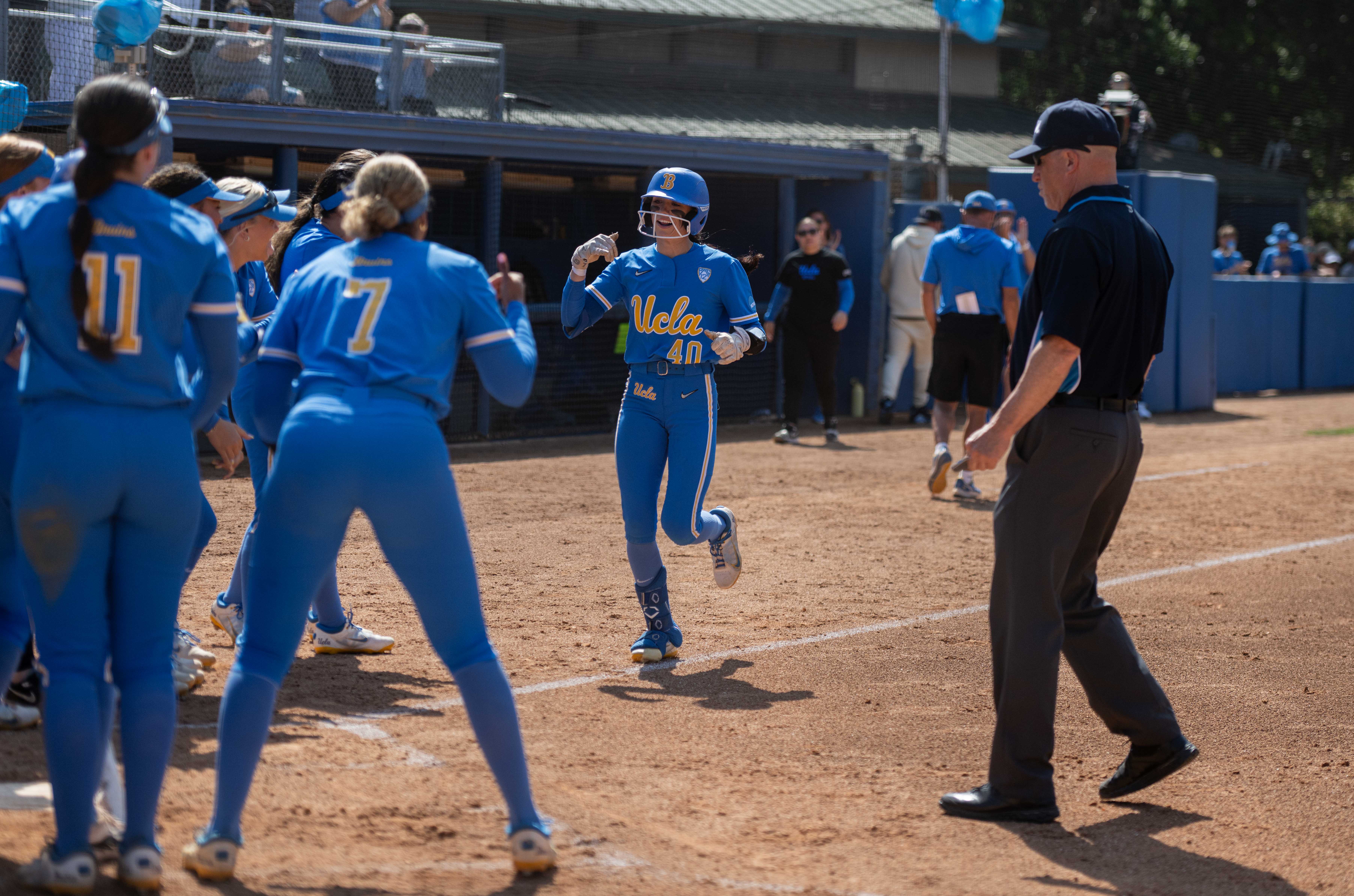
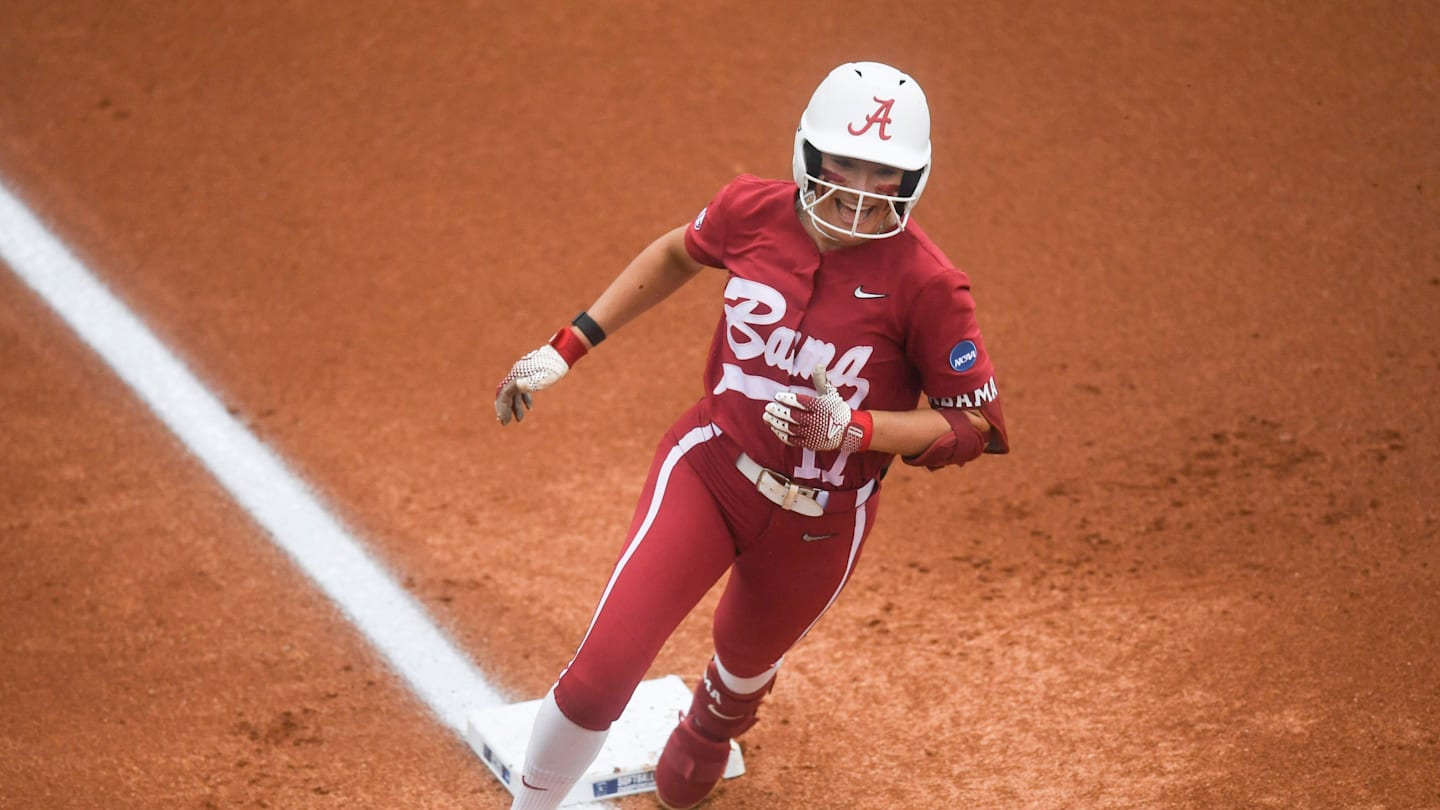
A second Alabama softball player will be transferring this offseason. Crimson Tide junior catcher Riley Valentine enterted the transfer portal on May 29 according to Softball America.
She made a goodbye post on social media Friday evening reflecting on her time at Alabama and thanking her teammates.
Valentine spent two seasons in Tuscaloosa after transferring over from Texas A&M prior to the 2024 season. She split time at catcher with Marlie Giles, who is in the same class as Valentine and was one of Alabama’s team captains in 2025.
This season Valentine played in 37 games with 26 starts and hit .211 with two home runs and seven RBIs. In her sophomore season at Alabama. in 2024, Valentine hit .202 with four home runs and 21 RBIs after stepping up at catcher after Giles broke her arm in the middle of SEC play. She combined to hit as many home runs over two seasons at Alabama as she did during her freshman campaign at Texas A&M.
Valentine’s most memorable moment in a Crimson Tide uniform came in Game 3 of the 2024 Knoxville Super Regional when she hit a grand slam in the first inning to help Alabama secure a spot at the Women’s College World Series. She also had a huge pinch-hit home run in extra innings of the regional win over Southeastern Louisiana the week before.
Valentine joins freshman infielder Kennedy Marceaux as the second Alabama player to enter the portal since the season ended. Alabama will now likely be looking to add an experienced catcher from the portal to share time with Giles so she doesn’t get overworked.
NIL
Michigan State loses former standout LB, assistant AD to NFL job
Darien Harris is moving on from his alma mater to the NFL. The former Michigan State linebacker and team captain is leaving his job in the university’s athletic department to become the director of player engagement for the New York Giants. Harris played a major role spearheading name, image and likeness efforts for the Spartans. […]
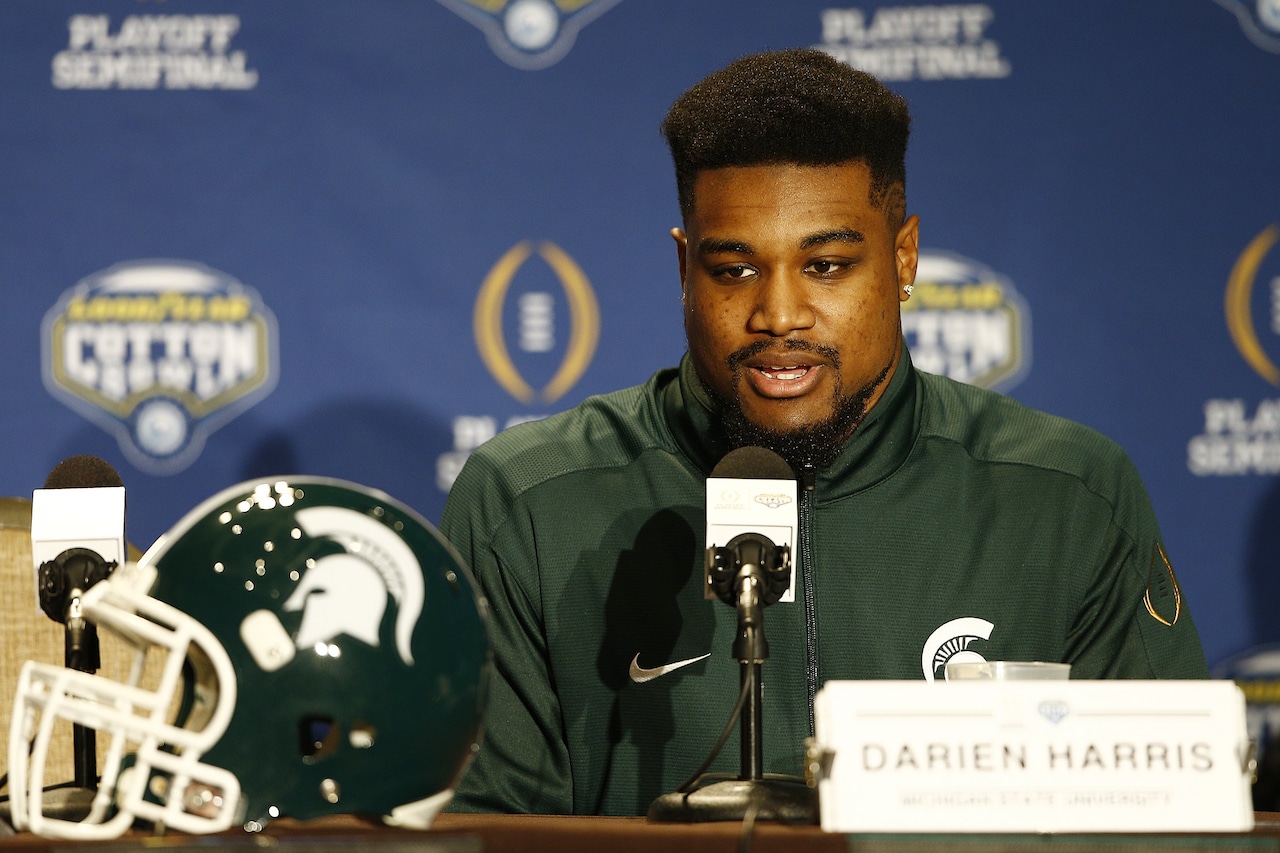
Darien Harris is moving on from his alma mater to the NFL.
The former Michigan State linebacker and team captain is leaving his job in the university’s athletic department to become the director of player engagement for the New York Giants.
Harris played a major role spearheading name, image and likeness efforts for the Spartans. It’s the latest shakeup at 1855 Place after athletic director Alan Haller was fired earlier this month by president Kevin Guskiewicz.
The multi-talented Harris spent more than three seasons on the football staff with the Spartans before moving to the athletic department. He was named assistant AD/NIL and special advisor to the AD in July 2023 and a year ago had his title changed to assistant AD/business development and NIL strategy.
The departures of Haller and Harris come amid landmark changes to college athletics with universities expected in July to start sharing about $20 million a year in revenue sharing with athletes. That still requires the House settlement to be passed.
Harris, a Maryland native, was a two-year starting linebacker for the Spartans and a co-captain as a senior in 2015 when they won a Big Ten title and reached the College Football Playoff. He spent time in the CFL, was an analyst on the Big Ten Network and worked at Quicken Loans before joining former coach Mel Tucker’s staff in 2020 as director of player engagement while fulfilling a variety of roles.
Guskiewicz is still searching for an athletic director and on Wednesday told the Detroit News he is down to seven finalists for the job.
NIL
Cooper Flagg’s Staggering NIL Deals Revealed Ahead of NBA Draft
Alex Slitz/Getty Images Cooper Flagg of the Duke reacts during the first half in the Final Four against Houston at the Alamodome on April 5, 2025 in San Antonio, Texas. Cooper Flagg may end up taking a pay cut by going to the NBA. The Duke superstar one-and-done swingman reportedly cashed in for $28 million […]


Alex Slitz/Getty Images
Cooper Flagg of the Duke reacts during the first half in the Final Four against Houston at the Alamodome on April 5, 2025 in San Antonio, Texas.
Cooper Flagg may end up taking a pay cut by going to the NBA.
The Duke superstar one-and-done swingman reportedly cashed in for $28 million in Name, Image and License deals during his lone season playing for the Blue Devils.
Flagg, who won the Naismith national player of the year and helped Duke reach the Final Four for the first time under coach Jon Scheyer, was a spokesperson for New Balance, Gatorade and other brands while playing for Duke.
He also signed a multi-year deal with Fanatics for his merchandise and likeness to appear on Topps-brand basketball cards, both from Duke and when he inevitably is chosen first overall at the 2025 NBA Draft next month in Brooklyn.
Flagg is almost certain to be selected by the Dallas Mavericks, who won the draft lottery earlier this month. As the No. 1 overall pick, Flagg will be eligible to make $62-plus million over four seasons for his rookie contract, or more than $15.5 million annually, according to Spotrac.
How Did Cooper Flagg Make $28 Million in NIL Deals?
Flagg was probably the most successful one-and-done player since the NBA began mandating at least one year of post-high school play in 2006.
Still, most conservative estimates had Flagg’s income at $5 million for his NIL deals. That figure would would have made him the second-best compensated college athlete behind University of Texas quarterback Arch Manning, whose estimated NIL deals total about $6.5 million.
But the figure was reported by ESPN reporter Howard Bryant, who was doing a panel with legendary sports broadcaster Bob Costas at the 92nd Street YMCA in New York. The crowd in attendance gasped when Bryant revealed Flagg’s NIL number, and so did Costas.
“He had a $13 million deal with New Balance and then a $15 million deal with Fanatics,” Bryant said.
Did Cooper Flagg Actually Make $28 Million in NIL Money at Duke?
Whether Flagg raked in the full $28 million while in college depends on the contracts, and we won’t be able to see those.
But when you consider the fact Flagg actually had more endorsement deals than those Bryant referenced — he stumped product for Gatorade, and his mom Kelly has been doing endorsements for Dr. Scholl’s orthotics — and Bryant’s reported number on Flagg’s money could be low.
But more likely, Flagg did not rake in nearly $30 million in endorsement money at Duke. He may have signed $13 million and $15 million contracts with New Balance and Fanatics, respectively, but the Fanatics deal was over multiple years, as was his shoe contract with New Balance as well.
Aside from Flagg, NIL deals have been a huge boon for basketball players, especially women’s basketball players. Caitlin Clark made about $4 million in NIL money, and Flau’jae Johnson has raked in about $1.5 million in NIL money thanks to rap-music deals and an equity share of the Unrivaled league.
Hence, why Costas believes it’s a great time for women to play college sports.
“It’s more profitable for a female college-basketball player to stay in college and collect the NIL [money],” Costas said. “For the time being, the top salary in the WNBA is like $75,000.”
Pat Pickens Pat Pickens is an experienced sports writer and media personality who has written for outlets like NHL.com, the Associated Press, the New York Times, USA Today and many more.
He is the author of the 2021 nonfiction book “The Whalers” and director/producer of the 2025 documentary film with the same name about the history of the NHL’s Hartford Whalers. More about Pat Pickens
NIL
BYU AD Brian Santiago on NIL and if money was brought up with AJ Dybantsa
-

 College Sports2 weeks ago
College Sports2 weeks agoPortal Update – Basketball and Gymnastics Take Hits
-

 Rec Sports2 weeks ago
Rec Sports2 weeks agoThe Program, a New Basketball Training Facility, Opening in Greenpoint This September
-
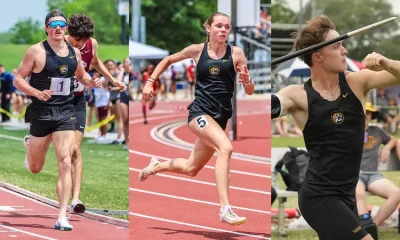
 Sports3 weeks ago
Sports3 weeks agoBarnes, Lippert and Smeal Set School Records at APU Franson Meet
-

 NIL3 weeks ago
NIL3 weeks ago2025 NCAA Softball Tournament bracket, schedule revealed
-
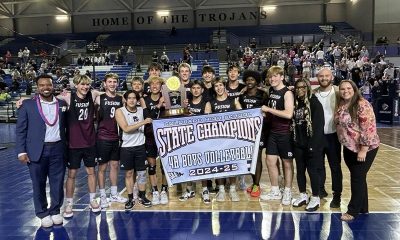
 Sports3 weeks ago
Sports3 weeks ago4A Boys Volleyball: Regis Groff Captures First State Championship
-

 College Sports2 weeks ago
College Sports2 weeks agoPortal Update – Basketball and Gymnastics Take Hits
-
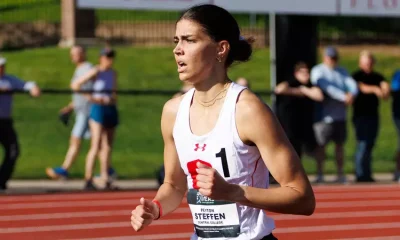
 Sports3 weeks ago
Sports3 weeks agoSteffen wins MVP, three events at league championships
-
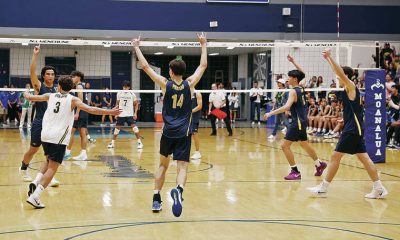
 Sports3 weeks ago
Sports3 weeks agoPunahou regains boys volleyball crown
-

 Health3 weeks ago
Health3 weeks ago'Mental illness is taking my husband from me'
-
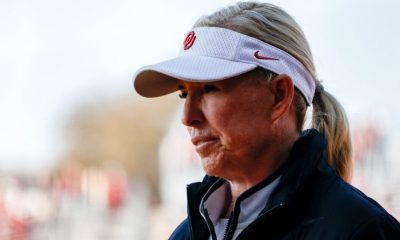
 NIL3 weeks ago
NIL3 weeks agoPatty Gasso reacts to SEC championship game cancellation: ‘There’s too much at stake’




































